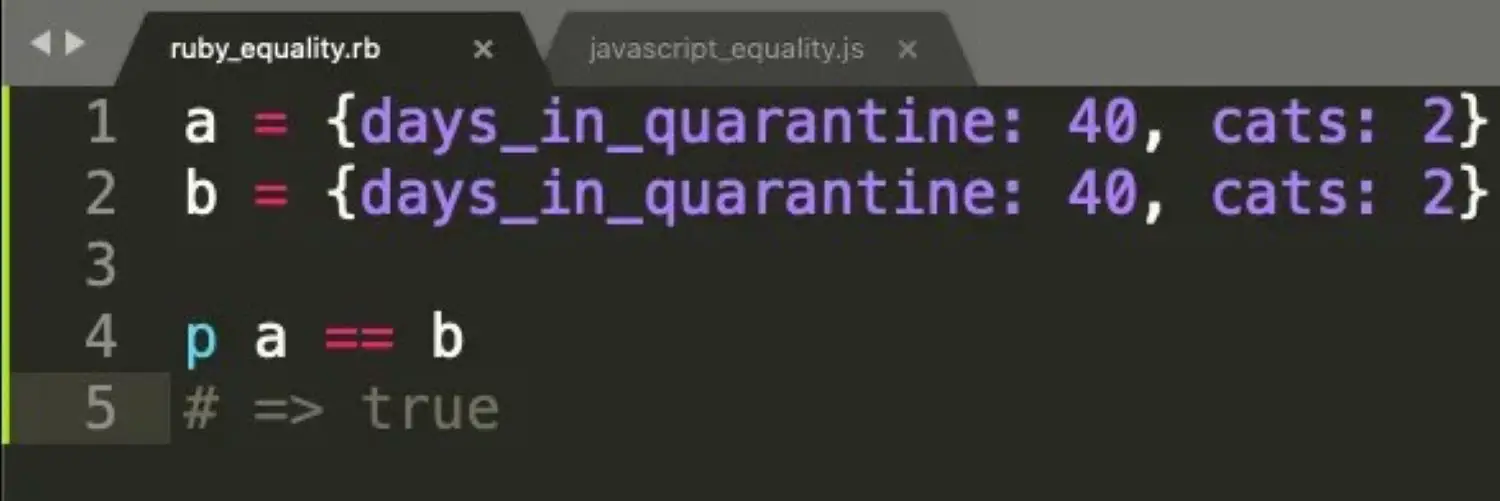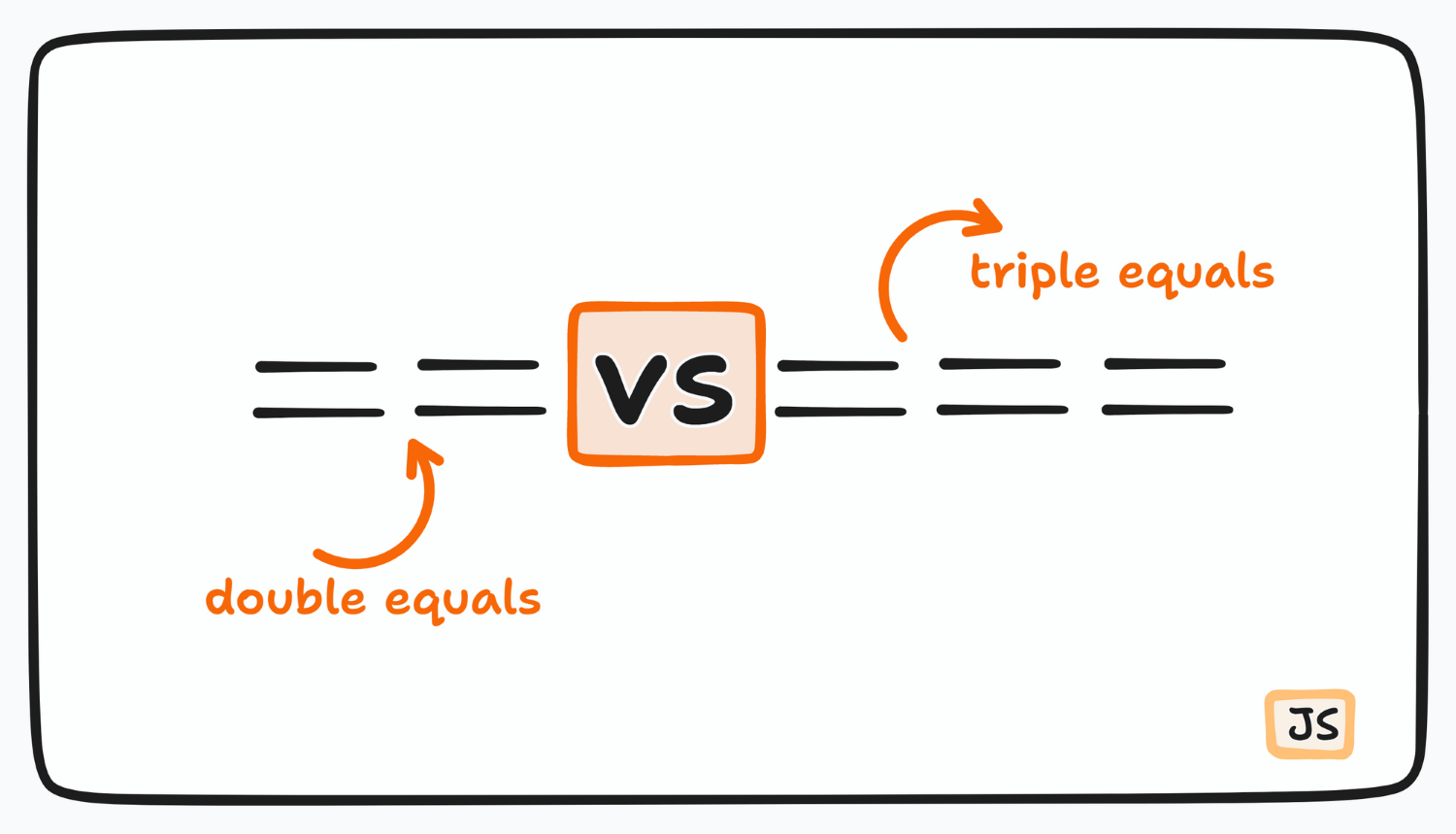Javascript has many comparison operators used by developers daily in their projects. Therefore, you must know the proper operator for “not equals” in Javascript, which is used frequently.
The not equals or inequality is a comparison operator that is used to check whether the values are not identical. The proper operator for not equals in Javascript is !=. It is made with the “not” symbol(!) and the “equal to” symbol(=)
In this article, we will discuss the proper operator for “not equals” and how to use the not operator in Javascript. Furthermore, we will also discuss not operator in Javascript examples.
Table of Contents
Concept of Equality in Javascript
As we discuss the proper operator for “not equals,” we must understand the concept of equality first. In Javascript, equality means whether two things or values are identical when we compare them. Equality has two versions: non-strict equality(==) and strict equality(===). For example, let’s look at the code below:
let x = 11;
let y = ’11’;
console.log(x == y); // Output: true
console.log(x === y); // Output: false
In the above code, we can see the utilization of both versions of equality. The non-strict equality (x == y) is accurate because it only differentiates the value and doesn’t consider what is the type of the variable.  Moreover, on the other hand, strict equality (x === y) considers both the type and value of the variable. That is why the output is false.
Moreover, on the other hand, strict equality (x === y) considers both the type and value of the variable. That is why the output is false.
How do you check that it is not equal in Javascript?
Now we know what the proper operator for not equals in Javascript. But how do you not equal in Javascript? For example:
- Not equals operator(!=)
const sample 1 = “Strobecorp”;
const sample 2 = “Strobecorp”;
if (sample 1 != sample 2) {
console.log(“The samples are not equal.”);
} else {
console.log(“The numbers are equal.”);
}
Output:
The samples are equal.
In this case, the output is equal because both are of the same value. This is the non-strict, not equals, operator, which only considers the value and not the type.
- Strict Not Equal Operator (!==)
const number = 20;
const string = “20”;
if (number !== string) {
console.log(“The values are not strictly equal.”);
} else {
console.log(“The values are strictly equal.”);
}
Output:
The values are not strictly equal.
In this case, the output is not strictly equal because the strict not equal operator considers the variable’s type and value.
The Not Equals Operator in JavaScript
The not equals or inequality is a comparison operator that is used to check whether values are not identical. There are two versions of not equals. One is the strict not equals, and the second is the non-strict not equals. The strict not equal focuses on the values and types, whereas the non-strict not equal focuses on the values. Furthermore, you can also learn about objects in Javascript, which can define custom data types and convert these Javascript objects to JSON. So, you can choose one of these operators based on your needs and utilize it in your projects. In the next section, there are some example programs that you may want to check out if you want to understand it more deeply.
Example Programs Using not equal operator (!=)
Let’s look at some of the applications of not-equal operator (!=)
Example 1
Differentiate numbers:
const sampleNum1 = 45;
const sampleNum2 = 25;
if (sampleNum1 != sampleNum2) {
console.log(“The numbers are not identical.”);
} else {
console.log(“The numbers are identical.”);
}
Furthermore, when you run this code, the output will be:
The numbers are different.
Example 2
Differentiate Strings:
const sampleString1 = “apple 🍎”;
const sampleString2 = “strawberry 🍓”;
if (sampleString1 != sampleString2) {
console.log(“The strings are not identical.”);
} else {
console.log(“The strings are identical.”);
}
Output :
The strings are not identical.
Example 3
Differentiate unalike data types:
const number = 20;
const string = “banana 🍌”;
if (number != string) {
console.log(“The values are not identical.”);
} else {
console.log(“The values are identical.”);
}
Furthermore, when you run this code, the output will be:
The values are not identical.
Example Programs Using strict not equal operator (!==)
In this section, we will look at some of the applications of strict not-equal operators (!=)
Example 4
Differentiate numbers:
const number1 = 44;
const number2 = “44”;
if (number1 !== number2) {
console.log(“The numbers are not strictly the same.”);
} else {
console.log(“The numbers are strictly the same.”);
}
Furthermore, when you run this code, the output will be:
The numbers are not strictly the same.
Example 5
Differentiate strings:
const sampleString1 = “banana 🍌”;
const sampleString2 = “Banana 🍌”;
if (sampleString1 !== sampleString2) {
console.log(“The strings are not strictly the same.”);
} else {
console.log(“The strings are strictly the same.”);
}
Furthermore, when you run this code, the output will be:
The strings are not strictly the same.
Example 6
Differentiate unalike data types:
const number = 104;
const string = “104”;
if (number !== string) {
console.log(“The values are not strictly the same.”);
} else {
console.log(“The values are strictly the same.”);
}
Furthermore, when you run this code, the output will be:
The values are not strictly the same.
Think of It Like Different Types of Fruit
For your better understanding, consider that you have a mango and a picture of a mango with you. So, The non-strict equality(==) will check whether you have a banana and will not consider the type. Moreover, if you use the non-strict equality, it will say that both are identical.
Moreover, if you use strict equality(===), you will receive a different output. It will check both the type and fruit. So, if you use strict equality, it will say both are not the same because one is an actual mango, whereas the other is a picture.
Therefore, the situation is the same with the non-equal operators. If you use a non-strict, not equal operator(!=), it will say it is the same, whereas when you use the strict, not equal operator(!==), it will not be the same.
See Also: Sorting In JavaScript: Algorithms And Techniques Explained
FAQs
What is != and !== in JavaScript?
Ans. The symbol != denotes the non-strict inequality operator, whereas !== denotes the strict inequality operator. You can select both of them in your projects based on your needs.
Why do we prefer === and !== Over == and!= In JavaScript?
Ans. We prefer === and !== over == and !== because the former ones (strict equality and inequality) consider both the value and the type of the variable.
What does the === mean in JavaScript?
Ans. The === describes the strict equality operator that checks whether the value and type are identical. It also considers the variable type, unlike the equality operator(==).
Which operator tests if values are the same !> ==?
Ans. You can use the equality operator(==) to test whether the values are equal.
Conclusion
In conclusion, we learned the proper operator for “no” equals. “Both equality and inequality have two versions, which are strict and non-strict. So in Javascript, these comparison operators are used primarily on projects by developers.
Also, Javascript has many applications, and you can use it to display time in HTML using Javascript and figure out how to create a calendar in HTML using Javascript or convert an array to a map in Javascript. If you want to start with the basics, you can learn how to declare an empty array in JavaScript.
Furthermore, you can practice some examples mentioned in the blog to improve your skills. If you still don’t understand, you can consider it as different fruit types to clarify your concept.
Hi, I’m Geoff. I design. I develop. I do lots of things in between. What that really boils down to is that I make websites.